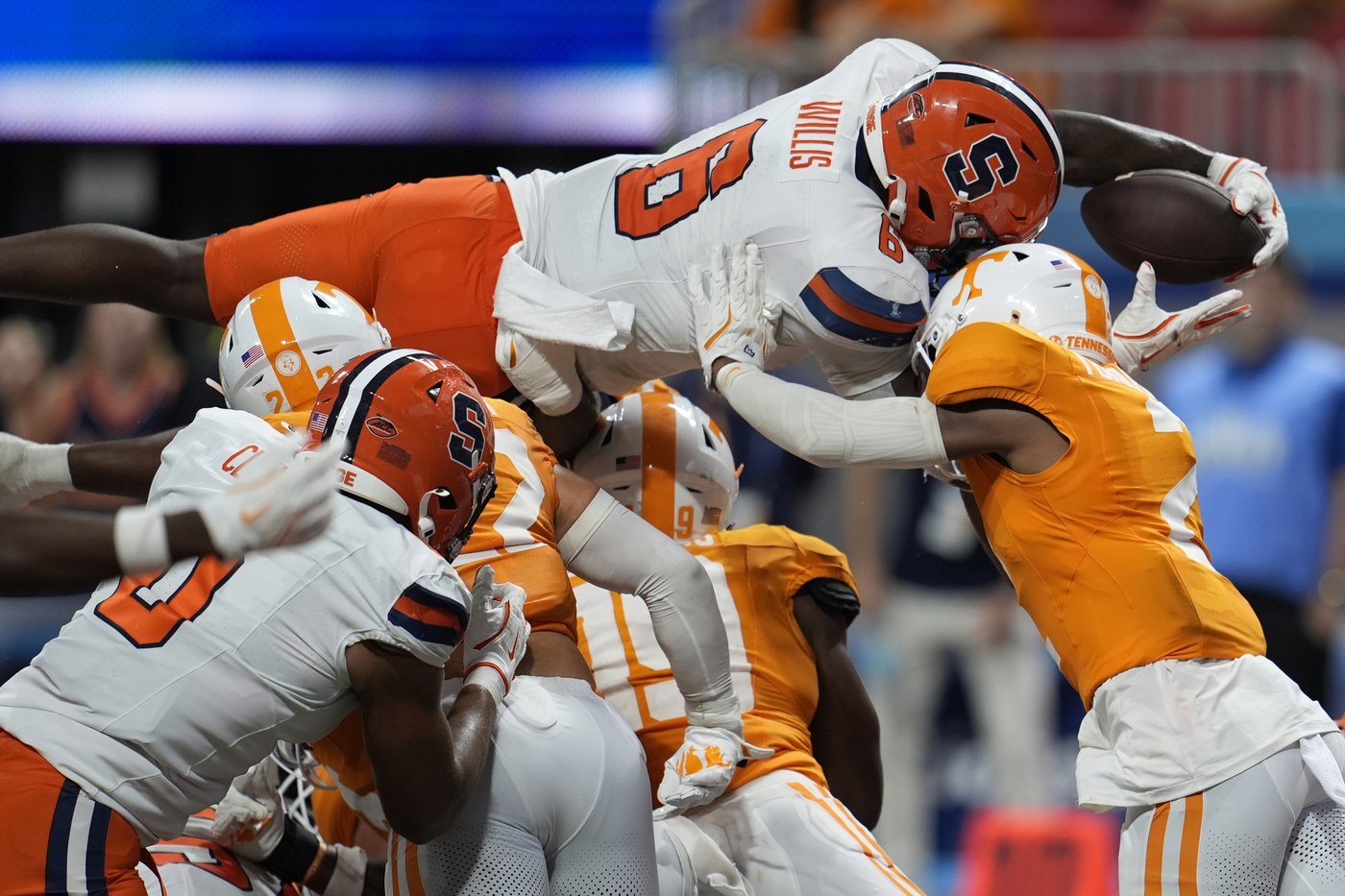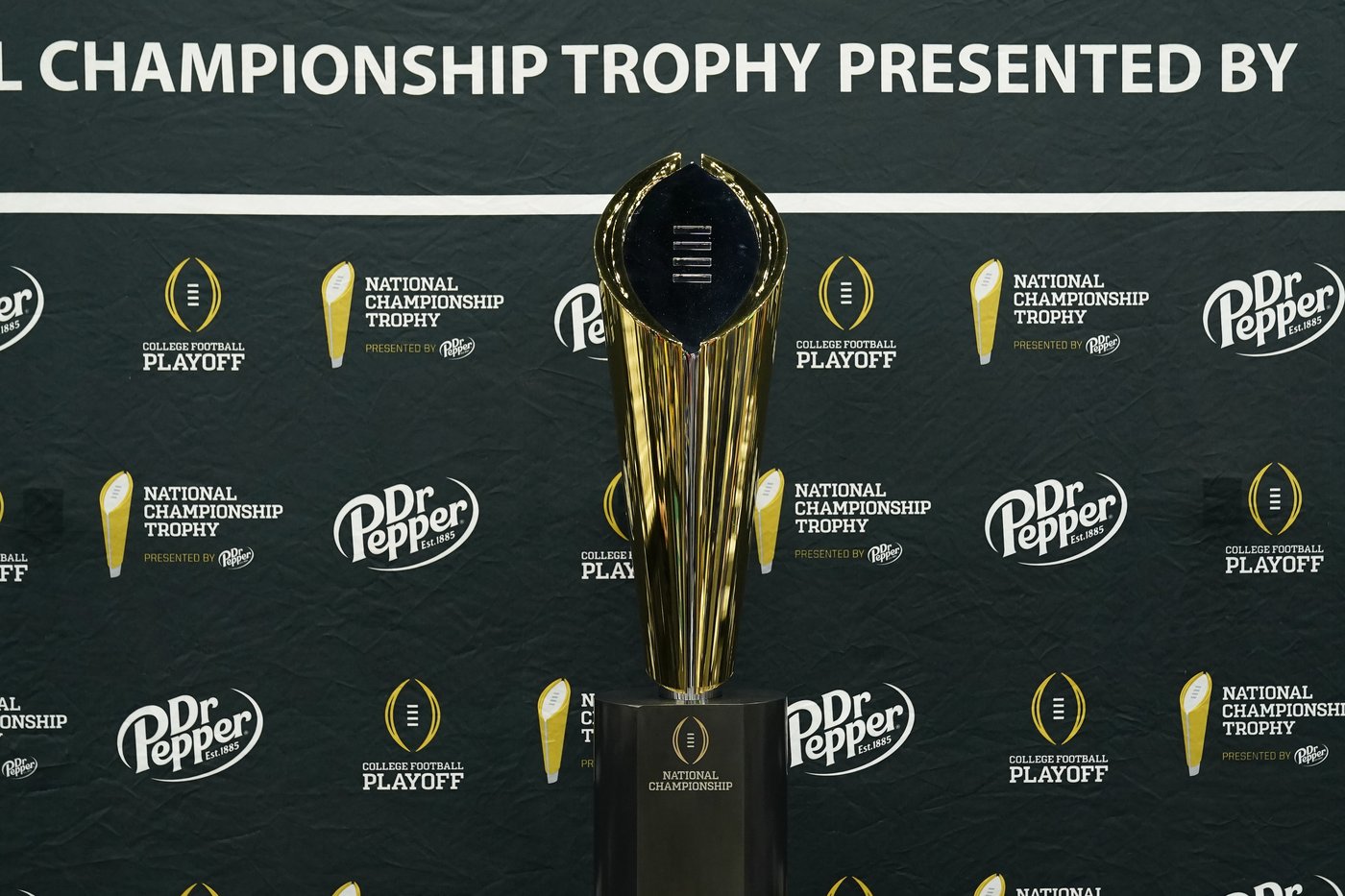
What will college football look like in 10 years? Massive changes loom
Ohio State and Florida State got into the win column. Texas and Alabama did not. The first big weekend of major college football is in the books, and now, players and athletic departments can settle into a new, once-unthinkable era in which schools pay athletes and a team’s ultimate goal isn’t a bowl game, but the playoff.
Nobody should get too comfortable.
In just seven years, the main funding source of all this change — a menu of media deals highlighted by ESPN’s $7.8 billion contract to televise the College Football Playoff — will either be renegotiated or blown up amid even more change. Whatever happens, another round of jockeying will almost certainly include a massive influx of even more cash.
What could stem from that is any or all of the following: the introduction of private equity, an NFL-style super league with a bigger playoff, a greater gap between haves and have-nots in college sports, and, of course, increased payouts for players.
“I think it will still be called college sports, but I think it’s going to look completely different in the next five, 10, 15 years,” said Paia LaPalombara, a partner at the Church, Church, Hittle and Antrim law firm who specializes on college sports deals and previously worked at the NCAA and in the Ohio State athletic department.
CFP is one part of a bigger TV rights puzzle
Most of the billions ESPN pays to televise the newly expanded 12-team playoff goes directly to the conferences, with the SEC and Big Ten getting the most money starting in 2026 and the ACC, Big 12 and Notre Dame collecting multiple millions.
All those conferences also have their own media-rights deals — the SEC and Big Ten are worth $1 billion or more — and when those deals expire, sports media experts who see live sports as maybe the most valuable property in TV and streaming believe the value will increase dramatically.
“It’s not just the playoffs, it’s the top 50 schools,” said sports marketing expert Joe Favorito. “Are they worth ‘4X’ what they’re worth now for their rights? They could be. It’s going to be a reimagining of it all.”
All of this bodes well for college athletes, whose portion of the revenue sharing is tied to the amount their schools bring in for the next 10 years under terms of the $2.8 billion NCAA antitrust settlement that allows their schools to share revenue — to pay them — directly as of July 1.
Could private equity make a difference?
Under terms of the settlement, schools are allowed to pay players up to 22% of revenue from certain categories such as media rights, ticket sales and sponsorship. For the next school year, that means a school can spent up to $20.5 million to keep athletes happy alongside whatever third-party NIL deals are being struck. But that’s hardly their only expense as the House settlement reduced the incoming revenue for schools and conferences over the next decade. The settlement also increased the number of those expensive scholarships schools can give out across all sports they sponsor.
Can private funding be a solution to what some see as a cash crunch for athletic departments eager to lure and retain top talent and still pay a growing number of bills?
“The thing about private equity is, we’re owned by the state of Ohio and the state of Ohio is not for sale,” Buckeyes athletic director Ross Bjork said. “Private equity has to buy something. I see these reports about how Ohio State is valued by Forbes at $2.3 billion. But nobody could buy 10% of that.”
Not that some aren’t trying to make this work. Florida State and the Big 12 Conference are among those who have explored deals with private equity firms, though neither reached agreements. Undoubtedly, they won’t be the last to try.
“There are definitely ways to do it,” said Dave Checketts, the former pro sports executive who is in the private equity space. “I know a public school right now that’s talking about selling basically half of what I’d call their athletics-entertainment business. That means the revenue they get from football, basketball and, in this case, they have a concert business. You come up with a number, then multiply that by five years of revenue and sell half of it to private equity.”
Would a super league drive revenue?
Another way private equity might get into the game is through the idea of a super league.
Two separate investors backed concepts called “College Sports Tomorrow” and “Project Rudy,” looking for ways to take 70 or more teams at the top of college football and combine them into an NFL-style league with huge payouts.
Neither commissioner from the two biggest conferences likes the idea.
“I have yet to see a single thing in any plan that contains things that we couldn’t do ourselves,” Big Ten Commissioner Tony Petitti said last year, reflecting the reality that around 80% of Power Four conference schedules are either league games or games against other Power Four teams.
“Project Rudy” investors were floating a reported $9 billion investment with a chance to drive a $15 billion increase in media revenue over 12 yearrs, according to Yahoo! Sports.
Such a move could involve antitrust issues — the combining of the big conference media rights is against the law — and might hasten a complete breakup of the NCAA as we know it, significant because the smaller schools play an outsize role in the success of March Madness.
Is more realignment to come?
Absent a super league, the Big Ten and SEC figure to dictate what the playoff looks like, both for the remainder of the current contract and the next one.
What’s hard to know is whether they will keep vacuuming up more teams to expand the size of their own footprints.
After Florida State and Clemson threatened to possibly depart the ACC, the league tried to cement its future by making a deal with them that restructures its media rights deal to give more money to teams that draw more viewers.
The Big 12 is at 16 teams. It’s hard to demolish that, even if only five have roots dating to the start of a once-Midwestern conference that now stretches across four time zones.
The Pac-12 was once part of the Power Five but nearly disintegrated and looks more like a Group of Five league as currently constructed, soon to be filled with schools that are still not as big as the big boys.
Jeffrey Kessler, a lead attorney for players in the House settlement, said change remains inevitable in college sports, with the players set to benefit the most.
“The reality is that the biggest revenue schools are in a different parameter as the schools with lower revenue,” he said. “There’s been a continuous movement of those schools, frankly, getting more independent decision-making and more control over their own destiny. There’s no reason to think that won’t continue. But I also don’t see them leaving the NCAA.”
___
Get poll alerts and updates on the AP Top 25 throughout the season. Sign up here. AP college football: https://apnews.com/hub/ap-top-25-college-football-poll and https://apnews.com/hub/college-football


Join the Conversation!
Want to share your thoughts, add context, or connect with others in your community?
You must be logged in to post a comment.
















